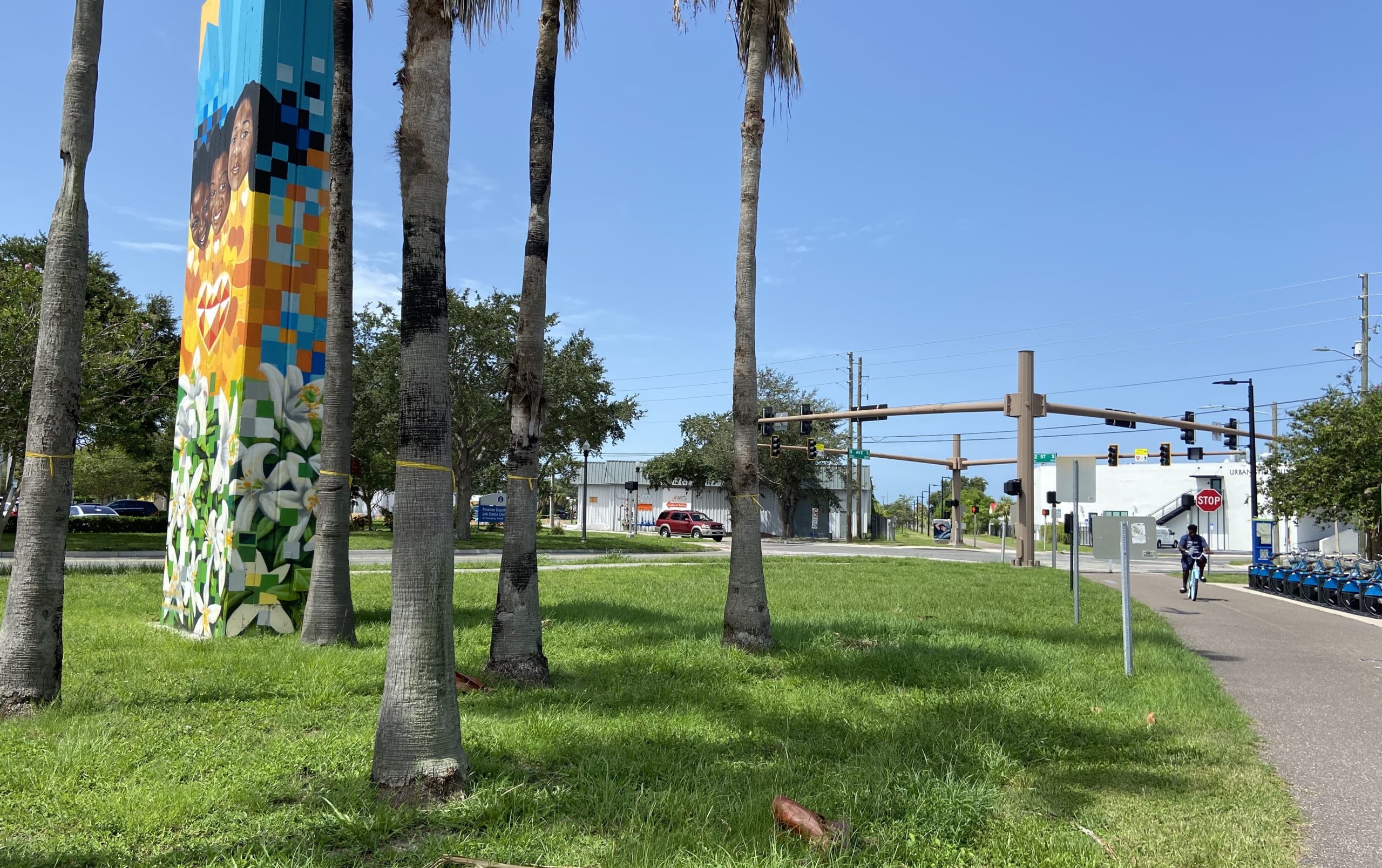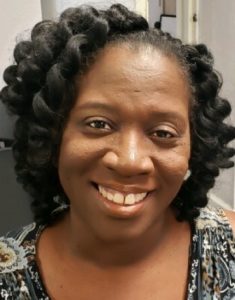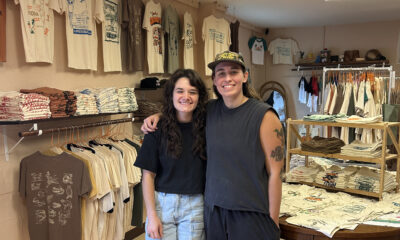Know
Developer addresses criticism to 22nd Street South rezoning proposal

The developer who has proposed rezoning part of the 22nd Street South corridor in St. Petersburg says he’s confident he’s on the right side of change for the area.

Joe Furst
Joe Furst, founder and managing principal of Place Projects, said his plans are aligned with the vision of existing business owners in the area to create a more vibrant, walkable and economically viable community along 22nd Street South between 1st Avenue South and 6th Avenue South.
Furst has proposed changing the zoning of the area from industrial to a new type of zoning, industrial mixed use. The change would allow small retail business, offices and residences to be built in an area that has a lot of vacant land, as well as some warehouses and “light manufacturing” businesses such as breweries or art galleries.
Related story: Developer envisions a new look for St. Pete’s 22nd Street South
Since Furst talked with the St. Pete Catalyst last week about his proposal, comments posted on the Catalyst website and Facebook have raised concerns about the plan. Some fear it would be “another gentrification project that will not cater to the needs of residents who live in the 22nd Street South neighborhoods.” Other commenters have questioned whether a white developer can understand the needs of the Black community.
The 22nd Street South corridor has historical and social sensitivities that should be taken into account by any developer, said Sarah-Jane Vatelot, an architectural designer who has written extensively about the displacement of Black residents and businesses at what is now the site of Tropicana Field, just blocks from 22nd Street.
The Catalyst took those concerns to Furst, who said he has spent a long time listening to those who are working and doing business along 22nd Street or live in nearby communities.
Furst’s proposal has the backing of The Deuces Live, a nonprofit that promotes economic revitalization along the corridor, as well as the Warehouse Arts District Association.
“When the neighborhood associations most directly impacted by this are in support of what you are doing, the ones that know it best and really understand the goals and interests of the specific residents and interests there, to me that’s the most important element. Those are the conversations that I thought were important to have before I started this initiative,” Furst said.
Adaptive reuse
Vatelot, the architectural designer and author, agrees that a zoning change is needed for the 22nd Street South corridor. When the current industrial zoning was put in place, the area was on the outskirts of St. Petersburg. But since then, manufacturers have moved out, many going to Pinellas Park and other communities.
“The I-MIX zoning seems to go hand in hand with the current trend of adaptive reuse of old warehouse buildings that no longer have use,” Vatelot said. “I would hate to see them come in here, raze all the old warehouses and build on top of them. The charm of areas like this is to take these structures and adapt them to new uses. That way you keep the character of the city. You keep the historical footprint of the area, and at the same time you use it differently and more efficiently.”

Sarah-Jane Vatelot
There could be a ripple impact from re-zoning in the 22nd Street South corridor, said Vatelot, who authored Where Have All The Mangoes Gone. The book describes how racial segregation led to the displacement of the residents and businesses in the Black community that thrived where Tropicana Field now stands. The Trop is just six blocks away from 22nd Street South, and its domed roof can be seen from many points along 22nd Street.
“The area in question has a historical and social sensitivity that needs to be taken into consideration when developing there,” she said. “What I would like to see are developers who come into this area propose what does inclusivity look like, and how are they going to bring inclusive ideals in their proposals, rather than further gentrifying the surrounding areas, building overpriced condos and storefronts and making the area unattainable.”
She also is concerned that as property values rise in the 22nd Street South corridor, property values also will go up in surrounding neighborhoods ranging from Commerce Park to the south to Historic Kenwood to the north, pushing out people who have lived in those communities for generations.

One of the parcels owned by Place Projects at 22nd Street South and 3rd Avenue South
Furst said housing built under the new zoning would have a wide range of price points, helping meet city goals to create more attainable housing, and he does not believe it would result in displacing residents elsewhere.
“In my work, you get that question often, which is why allow progress because it might impede or impose on other areas of the city,” Furst said. “To me, this is a situation where if you’re not growing, you’re dying. As you look at the growth of St. Pete and the way it’s continued to evolve, there are two clear choices as it relates to these swaths of land.
“You can keep the underlying existing zone and in my opinion, those sites will sit vacant or dormant for the next 10 or 20 years. In the inverse, you can do a community development project that engages the vested property owners and associations along the corridor, which we have done, and come up with a solution that better tailors a way to create connectivity between these unique neighborhoods.”
Positive impact
Some of the pushback that’s emerged to Furst’s proposal surprised Veatrice Farrell, executive director of The Deuces Live.
 “I think when people talk about should a white man develop property in that area, the question I would ask is who did he buy the property from,” Farrell said. “If the people he bought the property from were not Black, then why weren’t we having this conversation earlier?”
“I think when people talk about should a white man develop property in that area, the question I would ask is who did he buy the property from,” Farrell said. “If the people he bought the property from were not Black, then why weren’t we having this conversation earlier?”
The parcels Place Projects has acquired were vacant and in need of redevelopment, Furst said.
“This isn’t a situation where I came in and there were a bunch of Black-owned businesses or Black-owned single family homes that I came in to acquire and take over,” he said. “These parcels have been vacant for a long time and I don’t think anyone believes that large swaths of vacant land is accretive to people’s success or goals.”
He cited several existing businesses along 22nd Street South, including the Morean Center for Clay, 3 Daughters Brewing and Brick Street Farms.
“I never looked at those business and tried to determine what the race of those people were to make this a viable or not viable opportunity. What I did was I noted there were some great things going on, there was some really interesting planning going on between the Deuces and WADA, and having an expertise in this type revitalization work I thought there was an opportunity to continue to make a positive impact,” Furst said.
He continues to talk with people who reach out to Place Projects and will release the names of additional supporters in the coming weeks.
Alan DeLisle, St. Petersburg development administrator, said the city will watch the ongoing conversations.
“The concepts behind the ideas that Joe is bringing forward make sense, have been done elsewhere and I think it’s fair for us to have that discussion and for the community to react to those pieces and to figure out whether it’s going to be good for the community ultimately to move forward or not,” DeLisle said.
A specific rezoning proposal is several months away. Furst does not expect the plan to come before the St. Petersburg City Council until the second quarter of 2021, in concert with the ongoing Vision 2050 process the city is undertaking.








Danny White
July 31, 2020at4:39 pm
Seems like the challenges to the redevelopment are out of distrust of ‘outsiders,’ compounded by emotional sentiment, more so than the opportunity for economic growth, whatever that growth may look like in the long term. If Mr. Faust has a vision and he has done authentic due diligence to understand the sensitivities about the rich African American history of the 22nd Street corridor, then he should proceed with that vision. To me, as a Black long-term resident of this city living outside of but very familiar and connected by family to the corridor, what is important most is that his vision include the opportunity for Black entrepreneurs and others willing to make a financial investment in said vision to be invited to have an equitable seat at the table as the vision unfolds; full transparency assured along the way. How can Black people have a financial stake in what happens in the proposed redevelopment area? What can abutting home/property owners expect as property values rise? Map that out for them so that they can weigh real data over emotion, rumor and conjecture.
Ericka Guy
July 30, 2020at5:59 pm
Regardless of the race of the developer, it would be a great area to build a black Wall Street attainable buildings for black owned businesses and expressions of celebrating our culture as a part of St. Pete. If the zoning is mixed, bring in some grocery stores so the area is no longer a food desert and transportation for those without cars but working in areas of the city to easily get to work. As a disclaimer, I don’t live in the area but I would love to see an entire sector of black owned businesses and affordable quality housing.